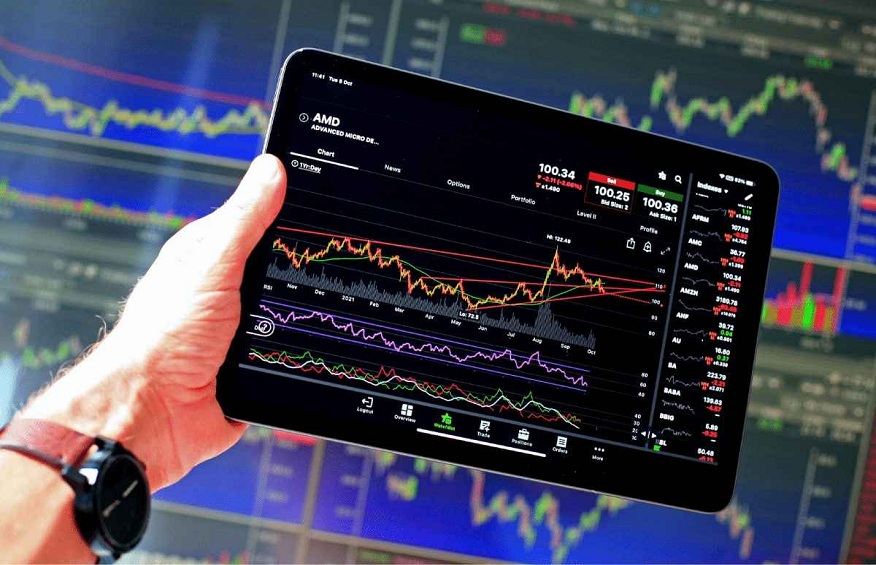History shows that the most seasoned share market investors have relied on technical indicators. Cut to the modern age, and these indicators are still valuable for investors to acquire success. Want to start your trading game already? Why don’t you concentrate on developing technical and fundamental analysis?
Assessing the market psychology is crucial, so every investor must get an insight into technical indicators for stock analysis. Now, what are technical indicators and types? Let’s stop beating in the bush and discover their types and functions.
Introducing the Concept of Technical Indicators for the Stock Market Analysis
Also referred to as pattern-based or heuristic signals, technical indicators are utilised by investors to understand the demand & supply of securities & market psychology. They form the foundation of any technical analysis.
Key metrics like trading volume offer clues about the movement of price and where it will continue. On the other hand, indicators are used to generate sell or buy signals.
Technical indicators are “technicals” in stock market analysis. These mathematical calculations are based on the following parameters:
Volume
Historic price
Open interest information
These parameters focus on forecasting financial market direction. The indicators are a significant part of technical analysis. They can be used to predict a new market trend.
Traders using technical analysis in their trading routines use different indicators, patterns, and oscillators to generate signals. Different technical indicators are developed by traders to get optimal results.
Outlining the Basic Types of Technical Indicators
Technical indicators in the stock market range into two basic types, mentioned in the following pointers:
1. Oscillators
Indicators that oscillate between any local minimum & maximum get strategised below or above the price chart. They are better referred to as oscillators.
2. Overlays
Technical indicators using the same scale as the prices will be plotted over the prices’ top on any stock chart. They are popular as overlays.
Investors can use various technical indicators while analysing security. With various options available, traders must select indicators that are best to work with. Besides, they need to figure out and familiarise themselves with how these indicators work.
In short, traders must combine technical indicators with subjective forms of analysis. The best way to do so is by understanding chart patterns and bringing innovative trade ideas.
One quick note: Due to their quantitative aspect, technical indicators also get incorporated into automated trading systems.
How Does A Technical Indicator Work?
Technical analysis is the trading discipline that identifies better trading scopes and evaluates investments. What they do is analyse trends from trading activities like volume and price movement.
Technical analysis is used on security that comprises historical trading data, which might include the following:
Futures
Stocks
Fixed-Income
Currencies
Commodities
Other Securities
Active traders use them because they can analyse short-term movements in price movements. Note that long-term investors can also use them to identify the exit and entry points. After all, using these indicators assist you in learning when to buy or sell any security
Want to Find Your Indicator Lately?
As an active trader in the stock market, using technical indicators is the foundation step toward success. But the use entirely depends on the type of investment you are planning. Short-term investments are easy to handle with these indicators. However, with the right trading strategies, you can find your indicator for the long term.
Suppose you are planning to get an indicator for options trading. For such a reason, you may use one that doesn’t have any significance in the short-term strategy. Ultimately, it all depends on your usage and preference.
A Concluding Message
Analysing technical stock depends on the idea that every stock chart has its unique trend. So, every trader should intend to determine the direction of an asset’s momentum, thereby attempting to get profitable results. You will find so many oscillators and indicators for specified purposes. Use one that helps you develop new strategies accordingly.
Want to start your trading game already? Why don’t you concentrate on developing technical and fundamental analysis?
Assessing the market psychology is crucial, so every investor must get an insight into technical indicators for stock analysis. Now, what are technical indicators and types? Let’s stop beating in the bush and discover their types and functions.
Introducing the Concept of Technical Indicators for the Stock Market Analysis
Also referred to as pattern-based or heuristic signals, technical indicators are utilised by investors to understand the demand & supply of securities & market psychology. They form the foundation of any technical analysis.
Key metrics like trading volume offer clues about the movement of price and where it will continue. On the other hand, indicators are used to generate sell or buy signals.
Technical indicators are “technicals” in stock market analysis. These mathematical calculations are based on the following parameters:
Volume
Historic price
Open interest information
These parameters focus on forecasting financial market direction. The indicators are a significant part of technical analysis. They can be used to predict a new market trend.
Traders using technical analysis in their trading routines use different indicators, patterns, and oscillators to generate signals. Different technical indicators are developed by traders to get optimal results.
Outlining the Basic Types of Technical Indicators
Technical indicators in the stock market range into two basic types, mentioned in the following pointers:
1. Oscillators
Indicators that oscillate between any local minimum & maximum get strategised below or above the price chart. They are better referred to as oscillators.
2. Overlays
Technical indicators using the same scale as the prices will be plotted over the prices’ top on any stock chart. They are popular as overlays.
Investors can use various technical indicators while analysing security. With various options available, traders must select indicators that are best to work with. Besides, they need to figure out and familiarise themselves with how these indicators work.
In short, traders must combine technical indicators with subjective forms of analysis. The best way to do so is by understanding chart patterns and bringing innovative trade ideas.
One quick note: Due to their quantitative aspect, technical indicators also get incorporated into automated trading systems.
How Does A Technical Indicator Work?
Technical analysis is the trading discipline that identifies better trading scopes and evaluates investments. What they do is analyse trends from trading activities like volume and price movement.
Technical analysis is used on security that comprises historical trading data, which might include the following:
Futures
Stocks
Fixed-Income
Currencies
Commodities
Other Securities
Active traders use them because they can analyse short-term movements in price movements. Note that long-term investors can also use them to identify the exit and entry points. After all, using these indicators assist you in learning when to buy or sell any security
Want to Find Your Indicator Lately?
As an active trader in the stock market, using technical indicators is the foundation step toward success. But the use entirely depends on the type of investment you are planning. Short-term investments are easy to handle with these indicators. However, with the right trading strategies, you can find your indicator for the long term.
Suppose you are planning to get an indicator for options trading. For such a reason, you may use one that doesn’t have any significance in the short-term strategy. Ultimately, it all depends on your usage and preference.
A Concluding Message
Analysing technical stock depends on the idea that every stock chart has its unique trend. So, every trader should intend to determine the direction of an asset’s momentum, thereby attempting to get profitable results. You will find so many oscillators and indicators for specified purposes. Use one that helps you develop new strategies accordingly.





